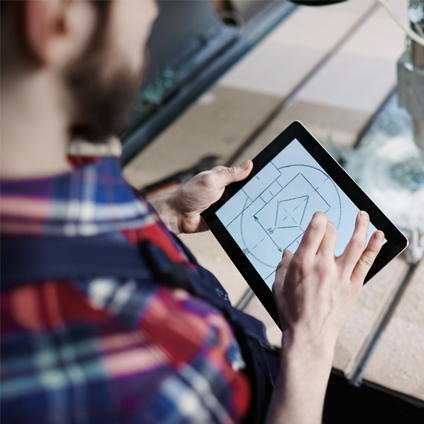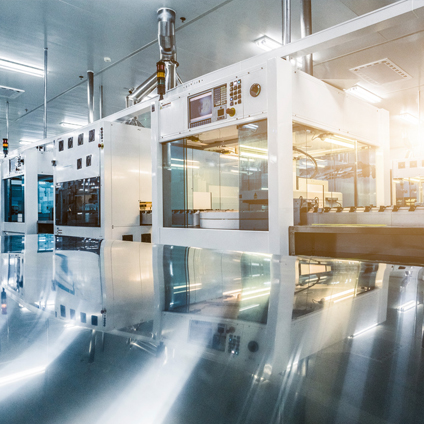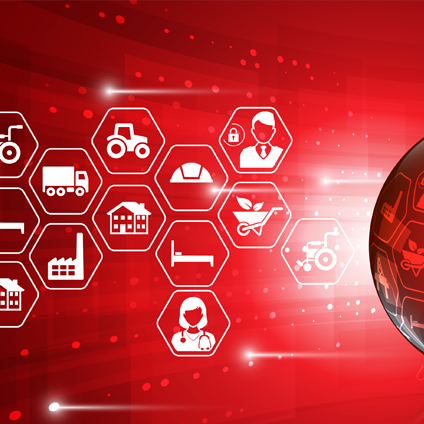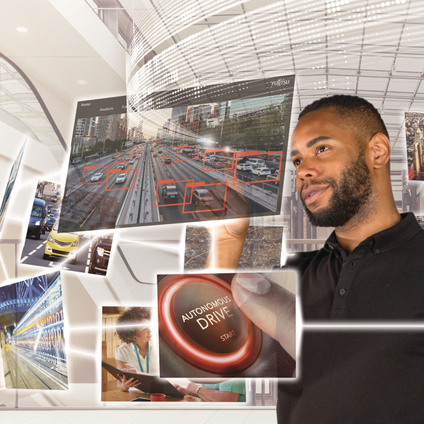IoT Infrastructure
Internet of Things – Technology for the Future
Globally IoT is growing, with analysts predicting that by 2020 between 20 and 50bn devices will be connected worldwide. It’s a core enabler for a hyperconnected business and a key driver of digital transformation and business innovation.
As IoT technology evolves and becomes more mainstream business technology, companies will need to secure the right skills within their organization to use and manage this technology. A shortage of the right skills is causing many organizations to put their digitalization projects on hold.
At Fujitsu, we deliver managed services to support IoT systems operation. We offer IoT solutions for industries sector-wide including; manufacturing, maintenance, retail and logistics, and mobility which can help solve issues in IoT operations and deliver required business outcomes.
An IoT solution typically consists of various levels of hardware/software integration:
- Physical Devices and Controllers
- Connectivity
- Edge Computing
- Data Accumulation and Abstraction
- Application
- Collaboration and Processes
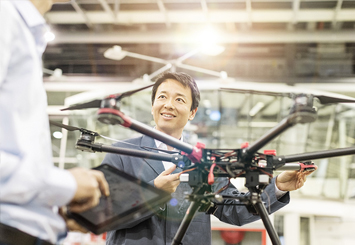
Fujitsu IoT Solutions – Modular, Flexible and Open
We have strong solutions, partnerships, and delivery capabilities to address all levels of an IoT solution. We believe solutions should always be focused on a business case, which is why we’ve created an offering that’s modular, flexible, and open. You simply select the services you need to achieve your required outcome.
With our IoT Infrastructure offering, we provide a set of managed components to simplify the delivery of IoT solutions, providing the key components required to bridge the Operational Technology (OT) and Information Technology (IT) divide.
With our IoT infrastructure offering, we provide a set of managed services to support IoT solutions from the edge of the network (sensors/actuators), through gateway devices, across managed M2M connections, to a Cloud K5 IoT platform where data can be presented to the digital business applications that drive the innovation and value from IoT.

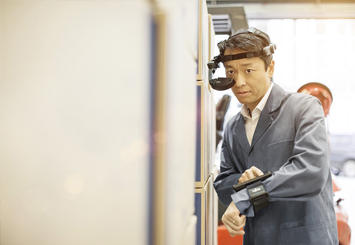
IoT Devices – Sensors and Actuators
Sensors provide information about the IoT devices they monitor. Information in this context can range from the identity of the device to measurements related to the device’s physical state. Sensors can be attached to or embedded in any device being monitored, or alternatively, they can be placed in the environment to indirectly monitor the device.
Actuators can modify the physical state of a device and can move (translate, rotate, etc.) simple devices or activate/deactivate functionalities of more complex ones.
At Fujitsu, we have developed our own specific sensors, but in addition, we also work with a range of partners to ensure that the correct sensor can be used for a specific application.


IoT Connectivity and Edge Gateways
An IoT gateway aggregates sensor data, translates between sensor protocols, and processes sensor data before sending it onward. IoT gateways perform several critical functions such as; device connectivity, protocol translation, data filtering and processing, security, and management.
IoT gateways may also operate as platforms for the application code that processes data and becomes an intelligent part of a device-enabled system. IoT gateways sit at the intersection of edge systems – sensors/devices/controllers and the Cloud. At Fujitsu, we have a range of gateways that can be used for this purpose and we work with partners for application-specific solutions.
We can provide a number of managed connectivity options for IoT solutions - ranging from traditional fixed line services and cellular M2M services through to modern Low-power Wide Area Network (LP-WAN) services.


Fujitsu IOT Platform - delivering all the support you need
With our Fujitsu cloud-based IoT platform we simplify and accelerate every stage of your IoT delivery, from design right through to management – leaving you with a robust, modular, and high-performing solution. With our platform in place you’ll have everything you need to:
- manage your network of sensors and devices
- send, receive, collect, store and analyze the data that’s generated
- turn that data into actionable insights, in real time
Discover how Fujitsu IoT has benefited customers

OPTEX, Japan
For OPTEX, we used our Fujitsu Cloud Service IoT platform to build a common infrastructure capable of efficiently processing various types of sensor data, in real-time. With our help, OPTEX has been enabled to dramatically reduce their initial investment, development man-hours, and running costs.
Read More


